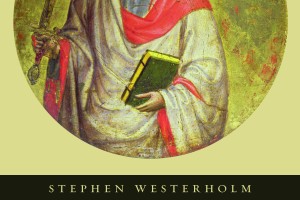How do you replace a legend? When an iconic sports figure leaves the sport he loves, how does that team ever replace him? It comes to no surprise to those who know me that I am a die-hard fan of the Pittsburgh Penguins. I remember staying up late on a number of occasions to watch the Pens play deep into overtime in the Stanley Cup playoffs (side note: The Pens have played in two of the top five longest games in Playoff history). When my favorite player Mario Lemieux decided to hang up his skates, I thought hockey was over in Pittsburgh. Who could ever replace the face of the Pens franchise? Thankfully a new superstar has emerged in Pittsburgh!
In the world of New Testament commentaries there is arguably no greater name than the late Frederick Fyvie Bruce. So when the time came to replace Bruce’s commentary on Hebrews in the NICNT, the baton had to pass to someone who could pick up the mantle of Hebrews studies and take readers further than what Bruce had accomplished. It goes without saying that this would be no small task, and time will eventually tell if Gareth Cockerill has succeeded as a worthy replacement for Bruce.
In the twenty-plus years since Bruce’s NICNT was last revised, there has been a number of excellent commentaries published on the epistle to the Hebrews. One can quickly bring to mind Johnson’s contribution to the NTL series, Ellingworth’s exhaustive NIGTC volume, O’Brien’s excellent addition to the PNTC volume, and Koester’s AB commentary. Thankfully there has been no shortage of fine critical commentaries published.
When I pick up a critical commentary on Hebrews one of the first things I look at is the author’s treatment of the structure of Hebrews. This is a topic of much interest for me personally, as I have spent a good amount of time reading (and re-reading) books, journal articles, and essays on the structure of Hebrews. Cockerill uses roughly sixteen pages to discuss various aspects of the structure of Hebrews. He interacts with the important works in the field of study (Vanhoye, Übelacker, Swetnam, Guthrie, Westfall, Koester, etc.), highlighting their strengths and weakness. This synthesis of previous studies lays the ground work for Cockerill’s own understanding of the structure of Hebrews.
Cockerill describes his treatment of the structure as one that is “sensitive to the formal features of the text, to its use of Scripture, and to the rhetorical shape.” But according to Cockerill, his analysis “puts considerable emphasis on the pastor’s use of imagery and on the concrete way in which he has arranged his material to motivate his hearers…The final justification for this structuring is the insight it provides into the individual parts and total impact of this sermon” (62). While Cockerill does provide much in the way of justification for his structuring, it nonetheless is a little convoluted in its presentation. Instead of presenting a linear rationale for his structuring, I often found myself flipping back and forth, trying to conceptualize the overall structure of Hebrews. This is not to say that his argument is flawed, it just could have been presented in a much easier-to-follow format.
The parallels between certain sections of Hebrews are brought out in a clear and convincing manner. For example, Cockerill notes that 1:1-2:18/12:4-29 form a chiasm:
God has Spoken in his Son (1:1-2:18)
(a) In His Son (1:1-4)
(b) Through the Eternal Son (1:5-14)
(c) Don’t Neglect “So great a salvation” (2:1-4)
(d) By the Suffering Son (2:5-18)
God Speaks/Will Speak in His Son (12:4-29)
(‘d) The Suffering of Legitimate Sons and Daughters (12:4-13)
(‘c) Don’t Fall into Apostasy (12:14-17)
(‘b) Through the Son from Heaven (12:18-24)
(‘a) At the Judgment (12:25-29)
Cockerill offer a number of helpful charts that illustrate his argument. These are helpful, considering the above comments on the difficulty of following Cockerill’s argument at some points.
In light of this, anyone who has spent anytime with Hebrews knows that there are patterns and intricate features that the author Hebrews utilized all throughout his letter. As the various studies on the structure of Hebrews mentioned above show, there is no real unanimity when it comes situating Hebrews within any particular structure. Nonetheless, Cockerill has taken the best from all of these and has presented a well argued and coherent discussion on the structure of Hebrews.
Inevitably when one thinks of Hebrews, one of the firsts things that come to mind—other than who the author is—are the so-called “warning passages.” No doubt these have been the rise and fall for many. While there are many articles, books, etc. written on these passages, it is important that they not be divorced from their historical and linguistic context. Too often we can isolated them and use them as proof texts in or Calvinist/Arminian debates. While I do not have time to discuss each of the passages individually, I will note that Cockerill does a fine job in situating these tricky passages within their respected contexts. He shows how each of them relates to their surrounding context and continues the discussion forward. The reader will find a great amount of care for these sections.
As I mentioned above, it will be sometime before we know if Cockerill is a worthy replacement for Bruce. But what I can say is that Cockerill is off to a good start! He has a fine introduction; a detailed and exhaustive commentary; and he is sensitive to both the author and the readers. I think it is safe to say that when a student or pastor is looking for a commentary on Hebrews, Cockerill should be added to the “commentaries on Hebrews hall of fame.”





Leave a Reply
Your email is safe with us.